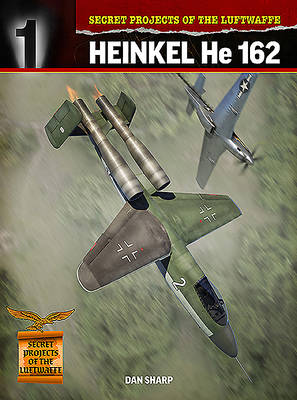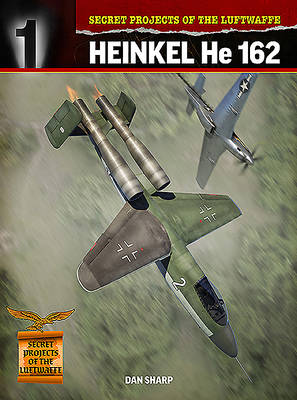
- Afhalen na 1 uur in een winkel met voorraad
- Gratis thuislevering in België vanaf € 30
- Ruim aanbod met 7 miljoen producten
- Afhalen na 1 uur in een winkel met voorraad
- Gratis thuislevering in België vanaf € 30
- Ruim aanbod met 7 miljoen producten
Zoeken
€ 17,45
+ 34 punten
Uitvoering
Omschrijving
Heinkel's single-jet He 162 fighter arrived in Luftwaffe service at the very end of the Second World War - but its development can be traced back to the beginning of July 1944. A contest had been set in motion to design a powerful and aerodynamically advanced replacement for Messerschmitt's twin-jet Me 262 and Heinkel believed it could win.
As the competition progressed and Germany's resources dwindled, it became clear that an advanced jet fighter was not what the Luftwaffe needed. A new concept was formulated: a cheap, basic fighter equipped with a single readily-available turbojet. The advanced fighter contest was temporarily shelved and Volksjäger was born.
Swept metal wings, V-tail and HeS 011 engine swapped for straight wooden wings, conventional tail and BMW 003 engine, Heinkel's fighter design was rushed through a brief selection process before Adolf Hitler himself placed an order for 1,000 a month. A massive effort saw the He 162 go from blueprints to flying prototype in less than two months. But was it a triumph of engineering prowess or a costly white elephant which hastened the end of the war? Using contemporary documents, author Dan Sharp explains and explores the development history of this fascinating and controversial late-war 'secret project'.
As the competition progressed and Germany's resources dwindled, it became clear that an advanced jet fighter was not what the Luftwaffe needed. A new concept was formulated: a cheap, basic fighter equipped with a single readily-available turbojet. The advanced fighter contest was temporarily shelved and Volksjäger was born.
Swept metal wings, V-tail and HeS 011 engine swapped for straight wooden wings, conventional tail and BMW 003 engine, Heinkel's fighter design was rushed through a brief selection process before Adolf Hitler himself placed an order for 1,000 a month. A massive effort saw the He 162 go from blueprints to flying prototype in less than two months. But was it a triumph of engineering prowess or a costly white elephant which hastened the end of the war? Using contemporary documents, author Dan Sharp explains and explores the development history of this fascinating and controversial late-war 'secret project'.
Specificaties
Betrokkenen
- Auteur(s):
- Uitgeverij:
Inhoud
- Aantal bladzijden:
- 172
- Taal:
- Engels
Eigenschappen
- Productcode (EAN):
- 9781911658245
- Verschijningsdatum:
- 3/02/2021
- Uitvoering:
- Paperback
- Formaat:
- Trade paperback (VS)
- Afmetingen:
- 185 mm x 246 mm
- Gewicht:
- 421 g

Alleen bij Standaard Boekhandel
+ 34 punten op je klantenkaart van Standaard Boekhandel
Beoordelingen
We publiceren alleen reviews die voldoen aan de voorwaarden voor reviews. Bekijk onze voorwaarden voor reviews.











